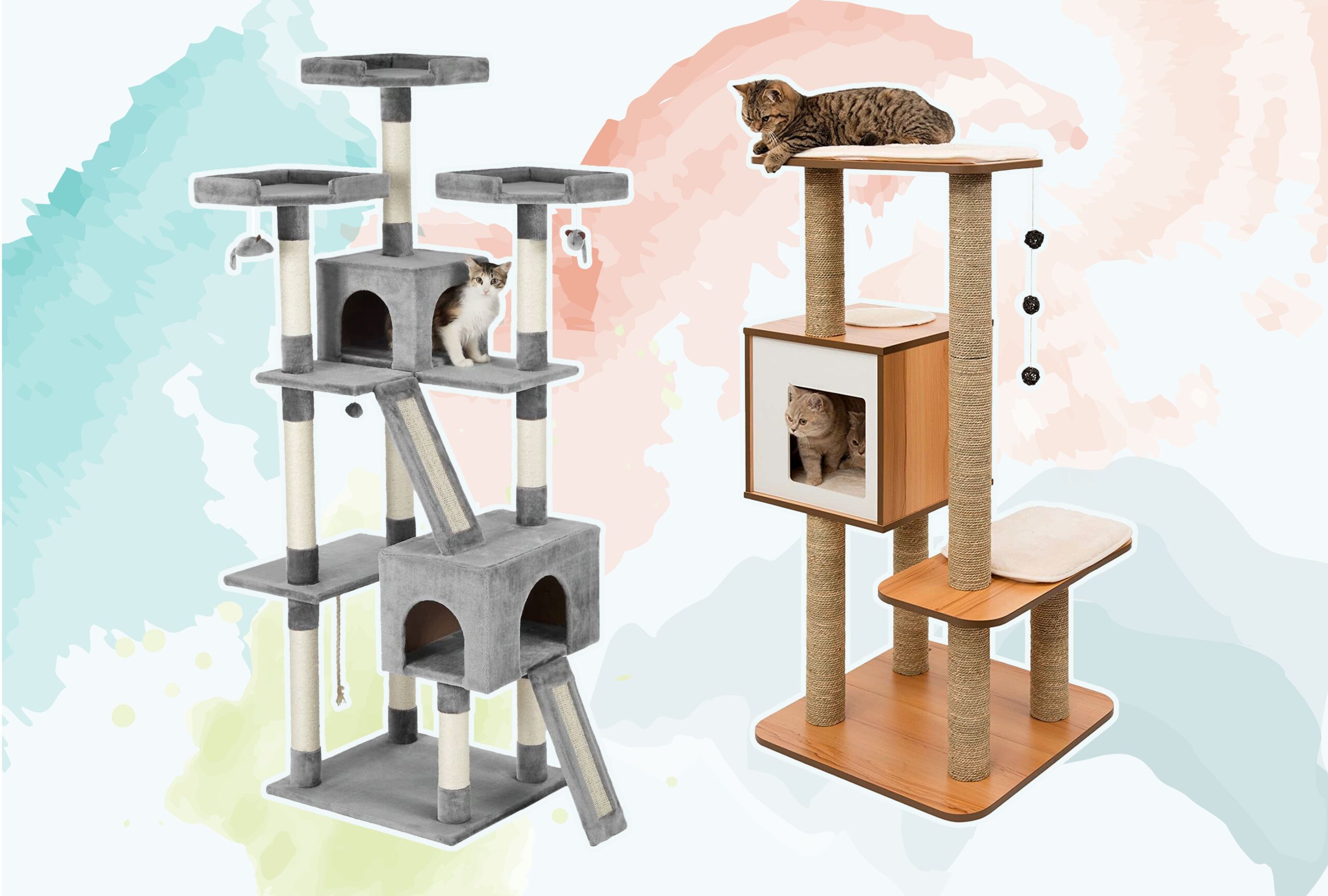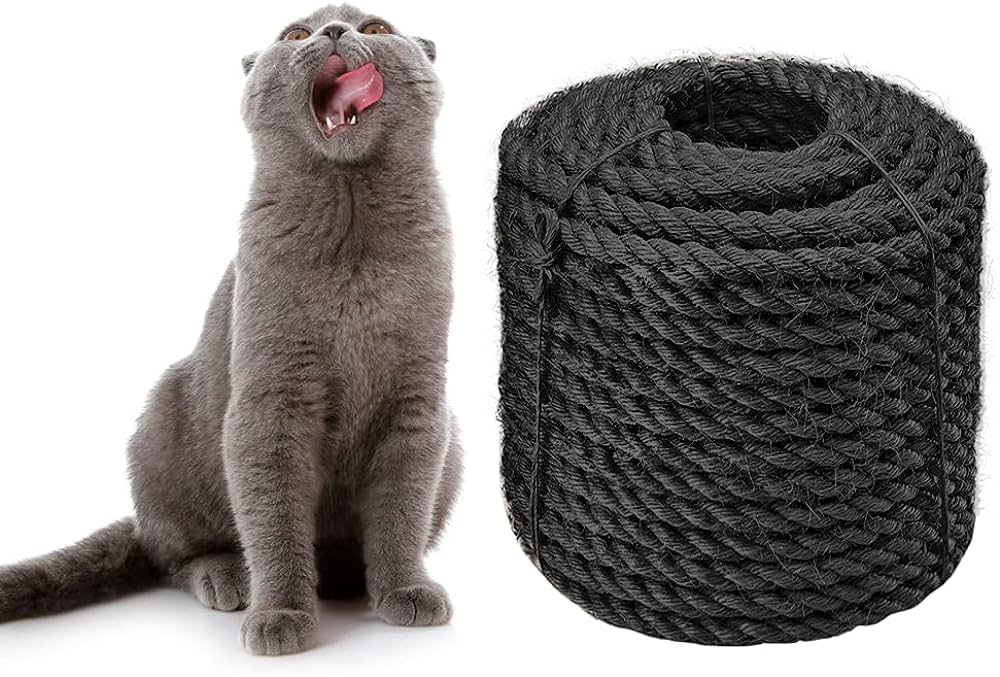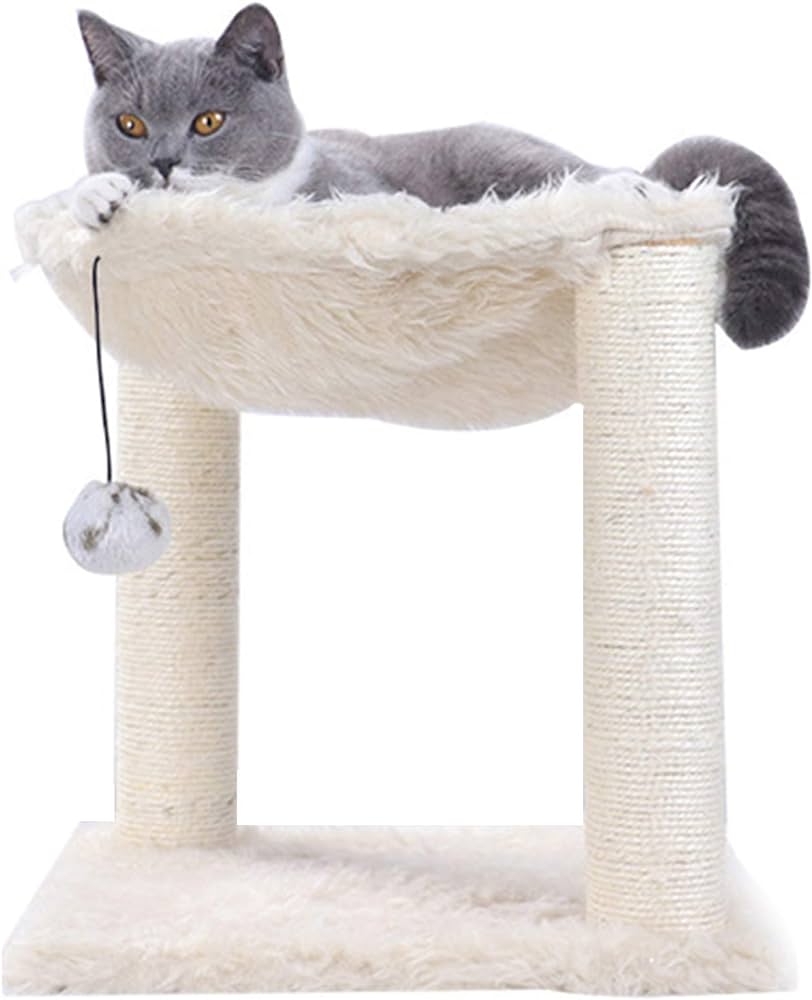To stabilize a cat tree, anchor it to the wall and widen its base. Use heavyweight materials for added solidity.
A cat tree isn’t just a playful accessory; it’s a fundamental element in a cat-friendly environment that stimulates and entertains our feline companions. Ensuring it is stable and secure is crucial for the safety of both the cat and the household.
Cat owners understand the importance of a cat tree that stands firm during vigorous play. Sudden toppling can not only scare the cat but also cause potential injury and damage. Additionally, a wobbly cat tree might deter a cat from using it, negating its benefits. Our guide will emphasize practical and straightforward strategies to enhance the steadiness of your cat tree, keenly keeping in mind the playful antics of curious cats. It is imperative to create a safe and enjoyable space that stands the test of time and the liveliness of our pets.
Importance Of Stability In Cat Trees
A wobbly cat tree can lead to all sorts of problems for your feline friend. Ensuring the stability of a cat tree is crucial. It keeps pets safe and gives them the confidence to leap and lounge to their heart’s content. Cats love to climb and explore their environment from different heights. A stable cat tree mimics this instinctual behavior. Let’s dive into why stability matters and how to make certain your cat’s tree stands strong.
Safety Concerns For Cats
Imagine a towering tree swaying dangerously with each jump from your cat. This unwanted movement can spell disaster. Cats need a reliable structure for safe exercise and play. An unstable cat tree can cause falls or even topple over, leading to injury. Here’s what to keep in mind:
- Weight limit: Check if the tree supports your cat’s weight.
- Base size: A wider base offers better support.
- Materials: Heavier materials tend to provide greater stability.
Enhancing Comfort And Usage
Stability doesn’t just prevent accidents; it also enhances your cat’s overall well-being. When a cat feels secure, they are more likely to use the tree for rest and play. This means they’ll enjoy all the benefits, such as exercise and a personal space. To ensure comfort and increased usage, consider the following tips:
- Secure all connections tightly during assembly.
- Place the cat tree in a corner or against a wall for added support.
- Check for any loose parts regularly and tighten as necessary.
:max_bytes(150000):strip_icc()/best-cat-trees-4159408-da66af890782426fb82e6036af07b36b.jpg)
Credit: www.thesprucepets.com
Assessing Your Current Cat Tree
Ensuring your cat’s safety comes first, so check its cat tree often. A stable cat tree means a happy, agile pet. Let’s figure out how to keep your cat’s playground secure and enjoyable.
Identifying Weak PointsIdentifying Weak Points
A thorough inspection helps spot instability. Look for these signs:
- Loose screws or bolts: These might cause wobbling.
- Worn-out parts: Frayed fabric or cracked platforms need attention.
- Uneven weight distribution: The tree should not tip easily.
- Weak joints: Joints should be tight and strong.
Materials And Construction Review
Quality materials make cat trees last longer. Check the following:
| Material | Durability | Status |
|---|---|---|
| Wood | Long-lasting | Look for splinters or breaks |
| Metal | Very durable | Inspect for rust or bending |
| Fabric | Varies | Check for tears or excessive wear |
Remember, sturdy construction keeps your cat’s playground safe. Always choose quality over cost when it comes to repairs or replacements.
Fundamentals Of A Secure Cat Tree
Cats love to climb and explore their vertical territory. A stable cat tree provides this space without risks. It’s crucial to focus on core stability features. These prevent tipping and ensure your pet’s safety. Let’s dive into the construction elements that make a cat tree robust and reliable.
Base Design And Weight Distribution
Anchoring a cat tree starts with a solid foundation. The base must be wide and heavy. This counters the leverage cats apply when they leap. Quality cat trees balance their mass from the bottom up. Check for these base attributes:
- Wide footprint: More ground coverage equals better stability.
- Heavy materials: Dense woods or weighted panels resist toppling.
- Low center of gravity: A lower profile prevents swaying.
- Non-slip bottom: Gripping texture keeps the base in place.
Optimal Height-to-base Ratio
The ratio between height and base dimensions is vital. An ideal cat tree tapers its levels for safety. This shape keeps the center of gravity low. Let’s outline the optimal parameters:
| Tree Height | Base Dimensions (Min.) |
|---|---|
| Short (Under 3ft) | 18″ x 18″ |
| Medium (3ft-5ft) | 24″ x 24″ |
| Tall (Over 5ft) | 28″ x 28″ |
Cat tree makers often follow these specifications. If a tree is taller, the base should be larger to maintain balance.
Diy Stability Solutions
Cats love climbing their trees. A wobbly cat tree can scare your pet. Keep your cat safe and happy with DIY fixes. Let’s make that cat tree sturdy!
Adding Weight To The Base
A heavy base stops tipping. Here’s how to add weight:
- Use sandbags or weights. Wrap them in fabric.
- Attach a wider wood panel. Screw it to the current base.
- Place the tree in a corner. Walls add support.
Choose a method that fits your space and tools. Your cat tree will stand firm.
Reinforcing Platforms And Posts
Strengthen the high spots for a safer climb:
- Check all screws. Tighten any that are loose.
- Wrap posts with sisal rope. It adds grip and stability.
- Secure platforms with L-brackets. They add extra hold.
Posts and platforms are now solid as rocks. Your cat can jump and lounge without wobbles. Enjoy watching your cat play safely on their improved tree!
Securing The Cat Tree To Your Home
Securing the Cat Tree to Your Home is vital for your feline friend’s safety. A stable cat tree means more fun and less risk. Let’s secure it right!
Anchoring To The Wall
Wall anchors provide safety and stability for taller cat trees. Follow these steps:
- Find a stud in the wall using a stud finder.
- Position the cat tree against the wall where you located the stud.
- Mark the anchor points on the wall and on the cat tree.
- Drill pilot holes into the wall stud and the cat tree.
- Screw in the furniture straps or brackets to connect the cat tree to the wall.
Always use the right tools and hardware. This ensures a secure hold, keeping the cat tree from tipping.
Non-intrusive Stabilizing Methods
Sometimes, drilling holes is not an option. Try these stabilizing tricks:
- Place the cat tree in a corner. Two walls support it this way.
- Add weight to the base. Use sandbags or weights discreetly placed.
- Opt for a wide base cat tree. More ground area equals more stability.
- Connect non-slip mats or rubber feet to the base.
- Lower the center of gravity by choosing a shorter cat tree.
These methods improve stability without damaging walls. Your cat tree stays put safely.

Credit: www.amazon.com
Regular Maintenance For Lasting Stability
Regular maintenance is key to keeping your cat tree stable and secure. Like any piece of furniture, cat trees endure wear and tear, especially with active felines climbing and playing. Taking time to inspect and care for your cat tree will extend its life and keep your pets safe. Follow these steps to ensure lasting stability.
Inspection And Tightening Schedule
To prevent wobbling, create a monthly inspection schedule. Check each component of the cat tree for signs of weakness. Loose screws and bolts are common issues that can be easily fixed. Use a screwdriver to tighten all connections. Fix loose parts right away to keep the tree stable.
- Inspect screws and bolts for tightness
- Look for fraying or torn fabric
- Check for split or cracked wood
- Tighten all parts firmly
Replacement Parts And Upgrades
Sometimes, tightening isn’t enough. Parts can wear out and may need replacement. Upgrade to higher quality materials for a longer-lasting structure. Keep extra screws and bolts on hand. Replace posts with solid wood for added strength. Consider a heavier base for extra stability.
| Part | Signs of Wear | Action |
|---|---|---|
| Screws/Bolts | Loosening | Tighten or Replace |
| Fabric | Fraying/Tearing | Reupholster |
| Wood | Splitting/Cracking | Replace |
| Base | Wobbling | Enlarge or Add Weight |
Remember, regular maintenance keeps your cat tree fun and safe. Set reminders to check your cat tree monthly. Make replacements and upgrades when needed. Your furry friends will thank you for a stable play space!
Creating A Safe Play Environment
Cats love to play in safe environments. A sturdy cat tree offers endless fun. It can, however, tip or wobble if not made stable. Ensuring your cat’s safety is crucial. A stable cat tree prevents accidents and injuries. It also gives your feline friend the confidence to leap and play to their heart’s content. Let’s explore how to enhance cat tree stability for your pet’s safety and enjoyment.
Strategic Placement
The location of a cat tree can make a big difference. Place it in a corner or against a wall for extra support. This simple step adds stability. Make sure the area is free from heavy foot traffic. This reduces the risk of it being knocked over.
- Choose a corner location for added stability.
- Avoid high-traffic areas to minimize risk.
Combining Stability With Cat Tree Extras
A cat tree with extra features is great. Yet, these must not compromise its stability. Look for cat trees with a wide base and low center of gravity. The base should be heavy. This will keep the tree steady as cats play. Anchor straps are an added bonus. They attach the tree to the wall.
| Feature | Benefit |
|---|---|
| Wide Base | Increases floor contact for better balance. |
| Heavy Base | Keeps tree from tipping easily. |
| Low Center of Gravity | Prevents toppling during vigorous play. |
| Anchor Straps | Secures tree to the wall for additional safety. |
Remember, cat tree accessories like toys and perches should be evenly distributed. An uneven load can cause instability. Regular checks and adjustments keep the tree safe for use.

Credit: www.amazon.com
Learning From The Experts
Keeping your cat tree stable is important for your pet’s safety. Let’s explore expert advice on how to do this.
Consulting With Veterinarians
Veterinarians are experts in animal health and safety. They suggest that a sturdy base is critical. Choose heavy materials like solid wood or engineered wood. Secure all parts tightly, ensuring no wobbly sections exist. This can prevent falls and injuries. Here’s what else they recommend:
- Regularly check the tree for signs of wear and tear.
- Ensure that connectors and fasteners are always tight.
- Use anchor straps to attach the tree to the wall.
Cat Behaviorists’ Recommendations
Cat behaviorists stress the importance of stability in cat trees. Cats love to climb and explore. A stable tree is key to a cat’s confidence. Behaviorists suggest:
| Feature | Benefit |
|---|---|
| Wide Base | Prevents tipping |
| Low Center of Gravity | Enhanced stability |
| Non-Slip Pads | Extra grip on smooth surfaces |
Follow these points for a secure, reliable setup. Monitor your cat’s behavior. It offers insights into the tree’s stability.
Frequently Asked Questions On How To Make Cat Tree More Stable
How Do You Stabilize A Homemade Cat Tree?
A homemade cat tree can be stabilized by widening the base, adding weight to the bottom, or anchoring it to the wall. Use heavy materials like plywood for a sturdy base and secure connections between parts.
What Materials Make Cat Trees More Stable?
For increased stability, use heavy materials like solid wood or thick plywood for the base and structure. Carpeting adds grip and metal brackets can reinforce joints, preventing the tree from tipping over.
Can Anchoring A Cat Tree Prevent Tipping?
Yes, anchoring a cat tree to a wall using brackets or straps can prevent it from tipping. Ensure the anchors are properly installed into wall studs for maximum security and stability for your feline friend.
How Often Should You Check Cat Tree Stability?
Check your cat tree’s stability monthly. Tighten any loose screws or bolts, and inspect for wear and tear. Regular maintenance ensures the tree remains safe and stable for your cat.
Conclusion
Crafting a secure and robust cat tree offers your feline friends endless fun. Use quality materials and ensure a wide base. Regular checks prevent wobbly surprises. Share this guide with fellow cat enthusiasts, and embrace the joy of happy, climbing kitties.
Your pet’s safety and entertainment are well worth the effort.



